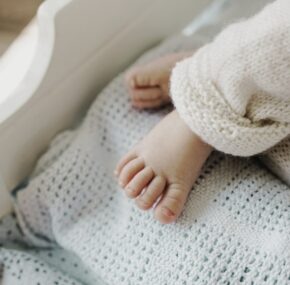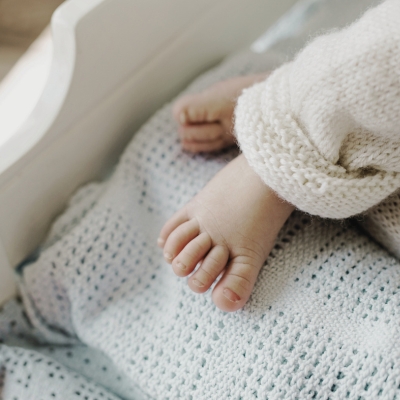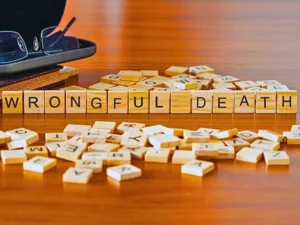Common injuries in child care centers can vary depending on the age of the children and the specific activities they engage in. However, there are some common injuries that can occur in child care centers, such as falls, chocking, cuts, bruises, and head injuries. To ensure the safety of children, child care centers should have appropriate supervision, maintain a safe environment, implement safety protocols, and have trained staff members who can respond to injuries promptly and appropriately.

Common Types of Injuries in Child Care Facilities
Children are naturally curious and eager to explore their surroundings. Their inquisitive nature can lead them to engage in activities that may pose risks or expose them to hazardous situations. Children are often active and engaged in physical play and sports. While these activities are crucial for their development, they can also lead to an increased risk of injuries, such as falls, collisions, or strains. Some of the most common types of injuries that can occur in child care facilities include:
- Falls
- Cuts, bruises, and burns
- Choking
- Poisoning
- Head injuries
- Allergic reactions
Falls are a common type of injury in child care facilities. Children can fall from furniture, playground equipment, or while running or playing indoors or outdoors. Child care facilities often have outdoor play areas with swings, slides, and climbing structures. Injuries from falls, collisions, or entrapment in playground equipment can occur. Active play, falls, or collisions can result in head injuries, ranging from minor bumps to more severe concussions.
Children may also accidentally cut themselves with sharp objects such as scissors or get bruised from bumping into furniture or other objects. Burns can happen from hot surfaces, such as radiators or stoves, or from scalding liquids like hot water or food.
Young children may put small objects or toys in their mouths, which can pose a choking or swallowing hazard. Child care facilities should also take precautions to ensure cleaning supplies, medications, and other potentially toxic substances are safely stored and out of children’s reach.
Illinois child care centers should also be aware and take safety measures to prevent allergic reactions. Children with known allergies may experience allergic reactions due to exposure to certain foods, insect bites, or environmental factors.
Dog bites in child care facilities are another serious concern, as they can cause physical and emotional harm to children. It is important the child care facilities take steps to protect your child from dog bites. One effective way to eliminate the risk of dog bites is to prohibit dogs from entering child care facilities altogether. This includes both staff members’ and visitors’ dogs. If dogs are allowed on the premises for specific purposes, such as therapy dogs or educational demonstrations, strict supervision is crucial. Dogs should be under the constant control of a responsible adult and kept separated from the children, unless there is a structured and supervised interaction.
It’s important for child care facilities in Illinois to adhere to the state’s regulations and licensing requirements, which often include safety guidelines and procedures to minimize the risk of injuries. Regular inspections and staff training can help maintain a safe environment for children.
Factors That Can Lead to Child Care Negligence
Child care negligence is a serious concern that can have detrimental effects on the well-being and safety of children in child care settings. Even moderate childhood injuries can impact your child for life. While the majority of child care providers are dedicated professionals committed to the welfare of the children under their care, certain factors can contribute to instances of child care negligence. Understanding these factors is crucial in order to prevent and address potential issues, ensuring the highest standard of care for children in child care facilities.
- Staffing Issues: One significant factor that can contribute to child care negligence is inadequate staffing. Insufficient staff-to-child ratios can strain child care providers, making it challenging to meet the individual needs of each child. Overworked or overwhelmed staff members may be more prone to lapses in supervision or failing to respond promptly to children’s needs, increasing the risk of accidents or injuries.
- Lack of Training and Qualifications: Insufficient training and qualifications among child care providers can also lead to negligent practices. Inadequate knowledge of child development, safety protocols, first aid, and emergency procedures can hinder a provider’s ability to ensure the well-being and safety of the children. Proper training and ongoing professional development are essential to equip child care providers with the necessary skills to address various situations that may arise.
- Inadequate Supervision: Lack of proper supervision is a key factor in child care negligence. Effective supervision involves constant monitoring of children’s activities, ensuring their safety and preventing accidents. Inattentiveness, distractions, or failure to implement appropriate supervision strategies can result in harmful situations or injuries. Daycare employees should maintain visual and auditory contact with children at all times, especially during high-risk activities.
- Lack of Safety Measures: Child care facilities should prioritize the implementation of safety measures to prevent accidents and injuries. Negligence can occur when necessary precautions, such as childproofing environments, securing hazardous substances, or maintaining age-appropriate toys and equipment, are overlooked. A failure to conduct routine safety inspections or adhere to established safety standards increases the risk of harm to children.
- Inadequate Communication: Effective communication among child care providers, parents, and caregivers is vital for maintaining the well-being of children. Negligence can arise when important information, such as medical conditions, allergies, or changes in a child’s behavior, is not properly communicated or documented. Regular and transparent communication channels help ensure that all relevant parties stay informed about the child’s needs, progress, and any emerging concerns.
- Staff Burnout and High Turnover: Child care providers who experience high levels of stress or burnout due to demanding work conditions may be more susceptible to neglectful behavior. Chronic fatigue, emotional exhaustion, or job dissatisfaction can impact a provider’s ability to meet the children’s needs consistently. Additionally, high staff turnover rates can disrupt the continuity of care and hinder the establishment of secure and nurturing relationships between children and caregivers.
Child care negligence can have severe consequences for children’s physical, emotional, and cognitive development. By understanding the factors that can contribute to child care negligence, we can work towards creating safer environments for children in child care facilities.
How to Determine Liability for Child Care Injuries
Determining liability for child care injuries can be a complex process that depends on various factors. If you have a child that has been injured while in a child care facility, you will need to document the incident. Make detailed notes about the incident, including the date, time, and location, as well as any specific details about what occurred and the injuries sustained. Take photographs of the injury, if possible. You will also want to inform the child care provider about the incident and inquire about their perspective on the matter. Obtain their version of events and any relevant information they can provide.
You should also examine any contracts or agreements you have with the child care provider. These documents may outline the provider’s responsibilities, obligations, and any liability provisions. Finally, collect any evidence that may support your claim. This could include witness statements, incident reports filed by the child care provider, photographs, medical records, and any other relevant documentation. You will use all of this information to prove negligence. Establishing negligence is crucial to proving liability for child care injuries.
Proving Negligence in a Child Care Injury Case
Proving negligence in a child care injury case requires demonstrating that the child care provider breached their duty of care, which directly resulted in the child’s injuries. Here are some steps that may help establish negligence:
- Establish the duty of care: Show that the child care provider had a legal duty to ensure the safety and well-being of the children in their care. This duty typically arises from a contractual agreement, licensing requirements, or relevant child care regulations and standards.
- Demonstrate a breach of duty: Prove that the child care provider failed to meet the required standard of care expected of them. This could involve showing that they acted negligently or failed to take reasonable steps to prevent the child’s injury. Compare their actions or lack thereof to what a reasonable and prudent child care provider would have done under similar circumstances.
- Show causation: Establish a direct link between the child care provider’s breach of duty and the child’s injuries. This requires demonstrating that the injuries would not have occurred if it weren’t for the provider’s negligence. Medical records, expert testimony, and other evidence can help establish this causal connection.
- Consider expert opinions: In complex cases or situations that require specialized knowledge, consulting with experts can be beneficial. For example, you may seek the opinion of a medical expert to explain how the child’s injuries are consistent with negligence or a child care expert to evaluate the provider’s actions and identify any deviations from industry standards.
- Document prior incidents or complaints: If there were previous incidents or complaints against the child care provider or facility, gather information and documentation related to them. These records can help establish a pattern of negligence or inadequate care, further supporting your claim.
- Consult with a personal injury attorney: Working with an experienced personal injury attorney is crucial when proving negligence in a child care injury case. They will guide you through the legal process, assess the strength of your case, gather evidence, interview witnesses, and employ their expertise to establish negligence and advocate for your rights.
Should You Get a Lawyer When Your Child Is Injured at a Chicago Daycare?
Child care injury cases can be complex, involving legal nuances and specific regulations. Hiring a lawyer who specializes in personal injury law, particularly cases involving child care injuries, will ensure that you have a knowledgeable advocate who can protect your rights, guide you through the legal process, and work towards obtaining fair compensation for your child’s injuries and related damages.
A Chicago child injury attorney who is familiar with the specific laws and regulations governing daycares in Chicago will have a deep understanding of the legal framework that applies to your case. They can provide guidance on how these laws may affect your claim and help you navigate the legal process effectively.
When your child is injured, it is essential to protect your rights and ensure that you receive fair compensation for their injuries and related damages. A lawyer will advocate for your interests, negotiate with insurance companies, and, if necessary, pursue legal action on your behalf.
Establishing negligence and liability requires a thorough investigation and collection of evidence. A lawyer has the resources and expertise to conduct a comprehensive investigation, gather relevant evidence, and build a strong case to support your claim. Determining the full extent of damages resulting from your child’s injuries can be challenging. A lawyer experienced in personal injury cases can help assess the damages accurately, including medical expenses, future medical needs, pain and suffering, emotional distress, and any other applicable damages.
A skilled lawyer can negotiate with the daycare facility’s insurance company to seek a fair settlement. They have the experience and knowledge to handle negotiations effectively, ensuring that your rights are protected and that you receive appropriate compensation for your child’s injury. Compensation might include medical bills, lost wages if a parent must miss work, pain and suffering, and compensation for disability or disfigurement. If a fair settlement cannot be reached through negotiation, a lawyer can represent you in court. They will prepare your case, present the evidence, and advocate for your child’s rights in front of a judge and jury.
Lawyers specializing in personal injury cases, including child care injuries, have experience dealing with similar situations. They understand the common challenges, legal strategies, and potential pitfalls associated with these cases. Their experience can be invaluable in building a strong claim and achieving a favorable outcome.






